Véronique Anne Lacombe
Treatment With Hydrolyzed Diet Supplemented With Prebiotics and Glycosaminoglycans Alters Lipid Metabolism in Canine Inflammatory Bowel Disease
Lacombe, Véronique Anne; Capela, F; Silva; Allenspach, Karin; Ambrosini, Yoko M; Neuber, Sebastian; Borcherding, Dana; Seo, Yeon-Jung; Segarra, Sergi; Glanemann, Barbara; Garden, Oliver A; Müller, Udo; Gordian Adam, M; Dang, Viet; Borts, David; Atherly, Todd; Willette, Auriel A; Jergens, Albert; Mochel, Jonathan P; Allenspach, Karin
Authors
F Capela
Silva
Karin Allenspach
Yoko M Ambrosini
Sebastian Neuber
Dana Borcherding
Yeon-Jung Seo
Sergi Segarra
Barbara Glanemann
Oliver A Garden
Udo Müller
M Gordian Adam
Viet Dang
David Borts
Todd Atherly
Auriel A Willette
Albert Jergens
Jonathan P Mochel
Karin Allenspach
Abstract
Canine inflammatory bowel disease (IBD) is a chronic, immunologically mediated intestinal disorder, resulting from the complex interaction of genetic, environmental and immune factors. Hydrolyzed diets are used in dogs with food-responsive diarrhea (FRD) to reduce adverse responses to immunostimulatory proteins. Prebiotics (PRBs) and glycosaminoglycans (GAGs) have previously been demonstrated to show anti-inflammatory activity in the intestinal mucosa. Notably, hydrolyzed diets combined with the administration of PRBs and GAGs offer a promising approach for the treatment of canine IBD. Our aim was to investigate the effects of hydrolyzed diet and GAG+PRB co-treatment on the serum metabolomic profile of IBD dogs. Dogs with IBD randomly received either hydrolyzed diet supplemented with GAGs and PRBs (treatment 1) or hydrolyzed diet alone (treatment 2) for 10 weeks. A targeted metabolomics approach using mass spectrometry was performed to quantify changes in the serum metabolome before and after treatment and between treatment 1 and 2. Principal component analysis (PCA), partial least squares-discriminant analysis (PLS-DA), hierarchical cluster analysis (HCA) and univariate statistics were used to identify differences between the treatment groups. PCA, PLS-DA, and HCA showed a clear clustering of IBD dogs before and after hydrolyzed diet, indicating that the treatment impacted the serum metabolome. Univariate analysis revealed that most of the altered metabolites were involved in lipid metabolism. The most impacted lipid classes were components of cell membranes, including glycerophospholipids, sphingolipids, and di-and triglycerides. In addition, changes in serum metabolites after GAG+PRB co-treatment suggested a possible additional beneficial effect on the lipid metabolism in IBD dogs. In conclusion, the present Ambrosini et al. Lipid Metabolism in Canine IBD study showed a significant increase in metabolites that protect gut cell membrane integrity in response to hydrolyzed diet alone or in combination with GAG+PRB co-treatment. Administration of such treatment over 70 days improved selected serum biomarkers of canine IBD, possibly indicating improved intestinal membrane integrity.
Citation
Lacombe, V. A., Capela, F., Silva, Allenspach, K., Ambrosini, Y. M., Neuber, S., Borcherding, D., Seo, Y.-J., Segarra, S., Glanemann, B., Garden, O. A., Müller, U., Gordian Adam, M., Dang, V., Borts, D., Atherly, T., Willette, A. A., Jergens, A., Mochel, J. P., & Allenspach, K. (2020). Treatment With Hydrolyzed Diet Supplemented With Prebiotics and Glycosaminoglycans Alters Lipid Metabolism in Canine Inflammatory Bowel Disease. Frontiers in Veterinary Science, 7, -. https://doi.org/10.3389/fvets.2020.00451
| Journal Article Type | Article |
|---|---|
| Acceptance Date | Jun 22, 2020 |
| Online Publication Date | Jul 30, 2020 |
| Publication Date | 2020-07 |
| Deposit Date | Jul 7, 2022 |
| Publicly Available Date | Jul 13, 2022 |
| Journal | Frontiers in Veterinary Science |
| Electronic ISSN | 2297-1769 |
| Publisher | Frontiers Media |
| Peer Reviewed | Peer Reviewed |
| Volume | 7 |
| Pages | - |
| DOI | https://doi.org/10.3389/fvets.2020.00451 |
| Keywords | metabolomics (OMICS); inflammatory bowel disease; dogs; serum; partial least-squares- discriminant analysis |
Files
Treatment With Hydrolyzed Diet Supplemented With Prebiotics And Glycosaminoglycans Alters Lipid Metabolism In Canine Inflammatory Bowel Disease
(3.7 Mb)
PDF
Licence
http://creativecommons.org/licenses/by/4.0/
Publisher Licence URL
http://creativecommons.org/licenses/by/4.0/
Version
VOR
You might also like
ACVIM consensus statement on the diagnosis of immune thrombocytopenia in dogs and cats
(2024)
Journal Article
Causes of thrombocytopenia in dogs in the United Kingdom: A retrospective study of 762 cases
(2023)
Journal Article
An investigation into an outbreak of pancytopenia in cats in the United Kingdom
(2023)
Journal Article
Downloadable Citations
About RVC Repository
Administrator e-mail: publicationsrepos@rvc.ac.uk
This application uses the following open-source libraries:
SheetJS Community Edition
Apache License Version 2.0 (http://www.apache.org/licenses/)
PDF.js
Apache License Version 2.0 (http://www.apache.org/licenses/)
Font Awesome
SIL OFL 1.1 (http://scripts.sil.org/OFL)
MIT License (http://opensource.org/licenses/mit-license.html)
CC BY 3.0 ( http://creativecommons.org/licenses/by/3.0/)
Powered by Worktribe © 2025
Advanced Search
